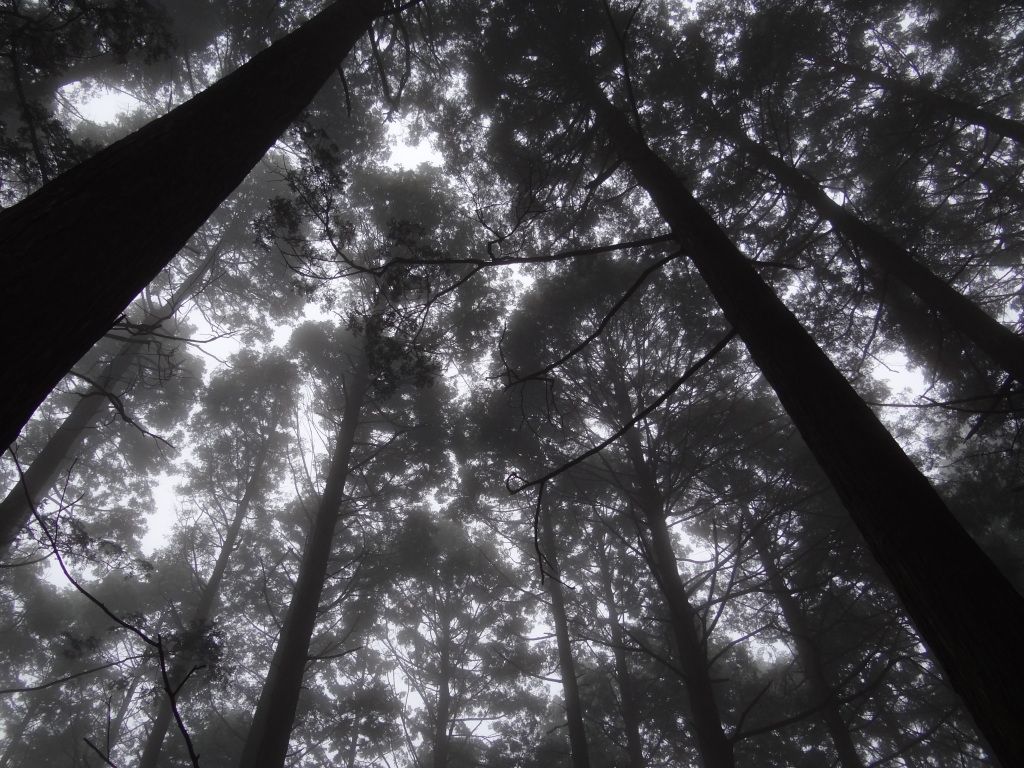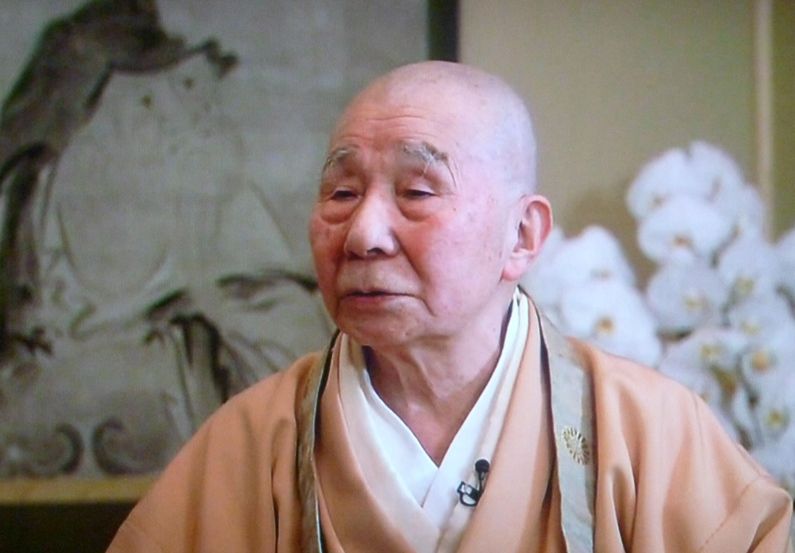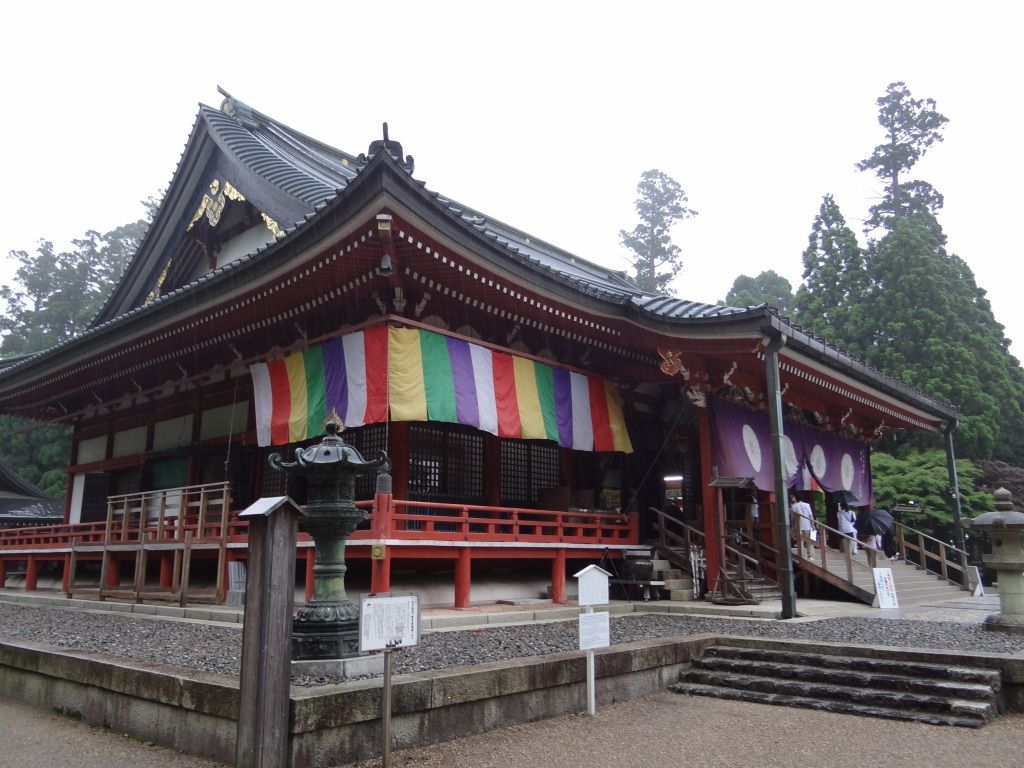 Mt. Hiei straddles the northeastern borders of Kyoto city proper and Shiga prefecture. It has an elevation of roughly 2800ft and is home to Tendai Buddhism's headquarters, Enryaku-ji, as well as a large garden museum. It can be accessed by cable car, ropeway and toll road. The mountain is bathed in the scent of cedar and incense, and in Shinto lore, is the home of the Mountain King Sanno, who represents three Buddhas, who in turn represent three of Shinto's most important deities. The avatar of Sanno is the monkey, and due to the Tendai sect's belief in the power of '3', it is believed the Three Monkey motif originated here. However, further research suggests that the actual origin may be Tōshō-gū in Nikko, Tochigi Prefecture, in the Kanto area.
Mt. Hiei straddles the northeastern borders of Kyoto city proper and Shiga prefecture. It has an elevation of roughly 2800ft and is home to Tendai Buddhism's headquarters, Enryaku-ji, as well as a large garden museum. It can be accessed by cable car, ropeway and toll road. The mountain is bathed in the scent of cedar and incense, and in Shinto lore, is the home of the Mountain King Sanno, who represents three Buddhas, who in turn represent three of Shinto's most important deities. The avatar of Sanno is the monkey, and due to the Tendai sect's belief in the power of '3', it is believed the Three Monkey motif originated here. However, further research suggests that the actual origin may be Tōshō-gū in Nikko, Tochigi Prefecture, in the Kanto area.Back in the Heian period, there was great faith put into Chinese geomancy, and it was believed that Kyoto was particularly vulnerable to evil influences from the northeast. Thus, the monkeys, which are also believed to chase demons away, provided protection to the city. There are, in fact, actual wild monkeys in most of Kyoto's mountain wood, including on Mt. Hiei.
The three schools of Buddhism (Theravada, Mahayana and Vajrayana) entered Japan near 550AD through monks at Mt. Hiei. Many of the fathers of Japanese sects of Buddhism started their spiritual journeys here, including Saicho of the Tendai sect, Nichiren of the Nichiren Sect, Honen of the Pure Land School and Dogen of the Soto sect.
The Sohei Monks, or "Warrior Monks" of Mt. Hiei were an important part of the spread of Buddhism in Japan and also the violent disputes between the differing sects in the Kamakura Period. They both caused fires and were the victim of retribution attacks many times over. in 1571, Enryaku-ji was burned to the ground by Oda Nobunaga, who wished to quell the ever-growing influence these powerful sohei monks possessed. Only a few of the original buildings survived the fire.
 |
| Yusai Sakai |
Hiking Mt. Hiei takes time, even if you take the cable cars from the base at Yase Station in Kyoto. If you go, you should plan for it to be an all day trip, as the temple complex at the top of the mountain is quite extensive. Buses going down the mountain typically finish at 4pm. Plan wisely!
